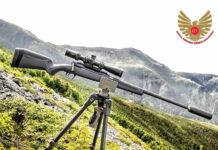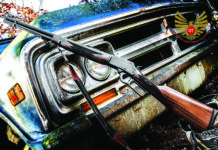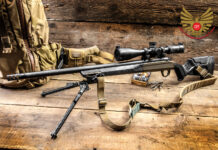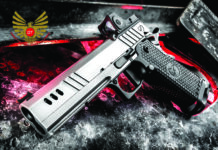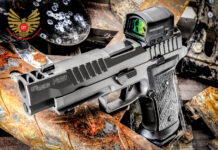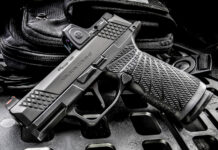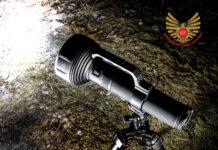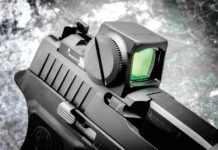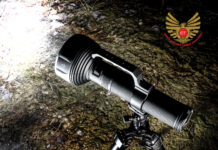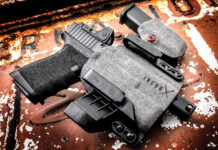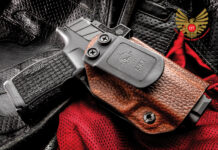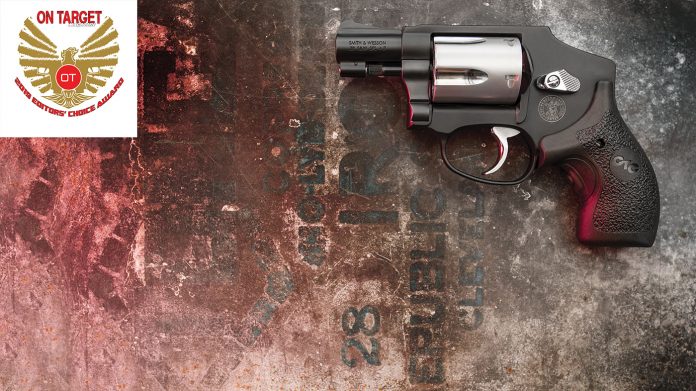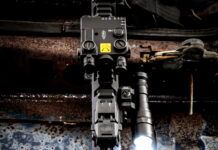Classic pocket .38 Special with auxiliary sighting system, super-smooth action and no internal lock – what’s not to like?
Smith & Wesson’s J-frame revolvers, introduced in 1950, seem to be eternally popular even in the time of high-capacity semiautomatics. They are simple to load, unload, and operate. They are extremely reliable. They are not only compact, but shaped to clear a pants cuff from an ankle holster or the fabric of a pocket better than square-backed autos, particularly the sleek “hammerless” versions of the J-frame. Now comes a particularly sweet variation from Smith & Wesson’s Performance Center, the subject of our test.
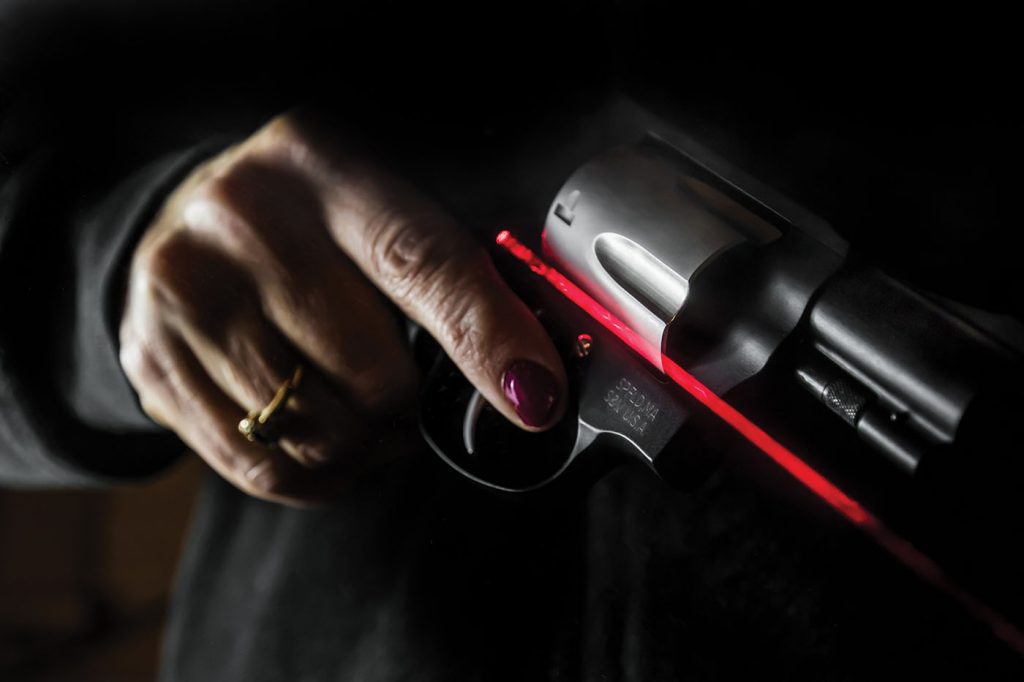
PC442CT
The standard Model 442, a five-shot .38 Special Airweight with aluminum frame, is enhanced with silvery cylinder, trigger, and cylinder latch, a Performance Center action tune and Crimson Trace CT105 LaserGrips in this package. The first thing that strikes you out of the box is the absence of a modern S&W revolver trademark feature, the internal lock. There have been a relatively few cases of the lock activating spontaneously, usually from the impact of being dropped on a hard surface or the recoil of very heavy loads in very light revolvers, but its absence warms the heart of most S&W aficionados.
Shooting the PC442CT
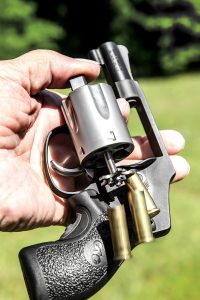
Four features distinguish this gun from the many other J-frames in the S&W catalog. They are the “pinto” look, as S&W collectors call it, of the silvery trigger, latch, and cylinder; the factory-installed LaserGrips; the absence of the widely hated lock; and the Performance Center action job. In order:
The “Pinto” look is indeed attractive and distinctive. Most of that stainless-steel cylinder has a matte finish, while the cylinder flutes share the bright, smooth polish of the trigger. The rest of the gun is matte-black, with aluminum frame and chrome-molybdenum steel for everything else.
The LaserGrips have proven to earn their keep for nearly a quarter century. Not likely to help much in bright sunlight at a distance, they come into their own for night shooting, and for when an injury or awkward position keeps you from raising your handgun to line of sight.
The no-lock feature eliminates a problem some have found in the past. It also pleases us old-fashioned S&W fans, and pleasing people with no harmful side effect is always A Good Thing.
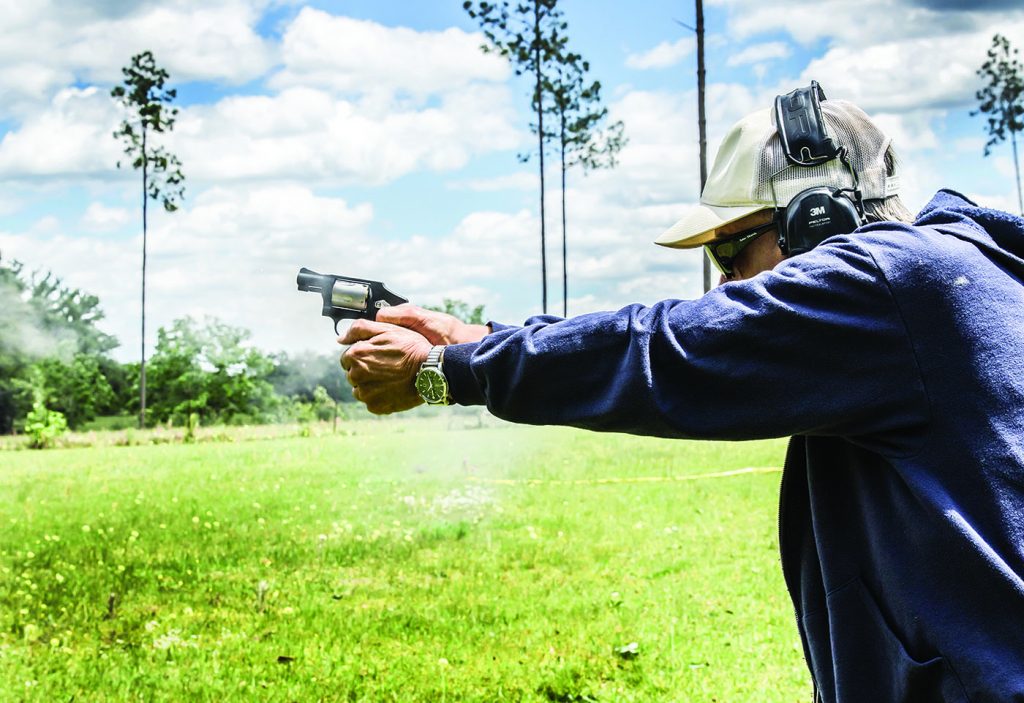
The action job is, to this writer, what really sells this particular variation of S&W J-Frame. The trigger is narrow, polished mirror smooth and all edges rounded to keep the shooter’s finger from pulling the muzzle sideways through the long double-action trigger stroke. The trigger pull is amazingly smooth. In the old days, a typical J-frame ran around fourteen pounds pull weight in double-action mode, often more. This one was under ten pounds—9.58 pounds average, and very consistent pull to pull. That made shooting a lot easier. The Performance Center says the details of the action work on the PC442 are proprietary, but I suspect lighter springs and hand-honed contact surfaces.

